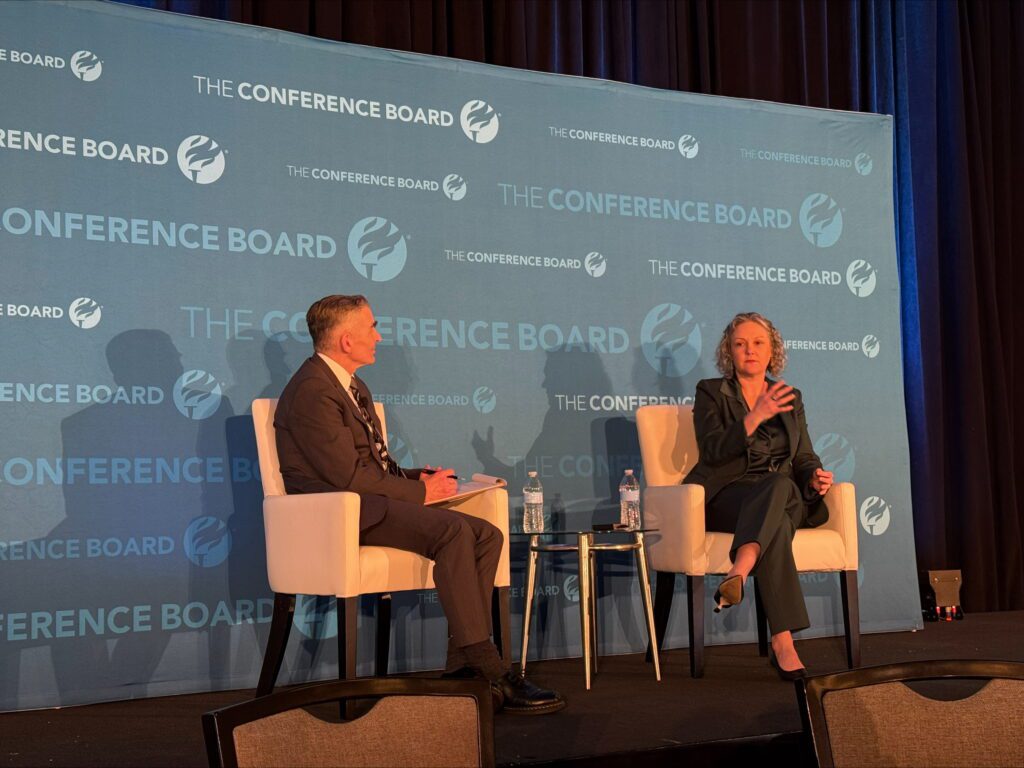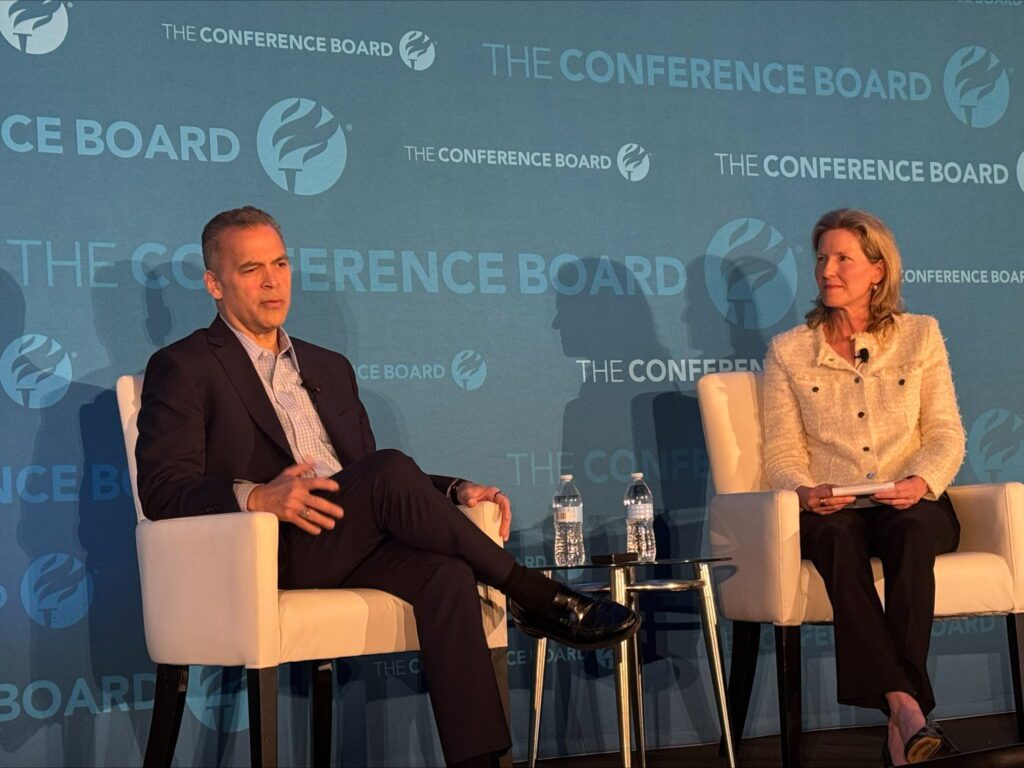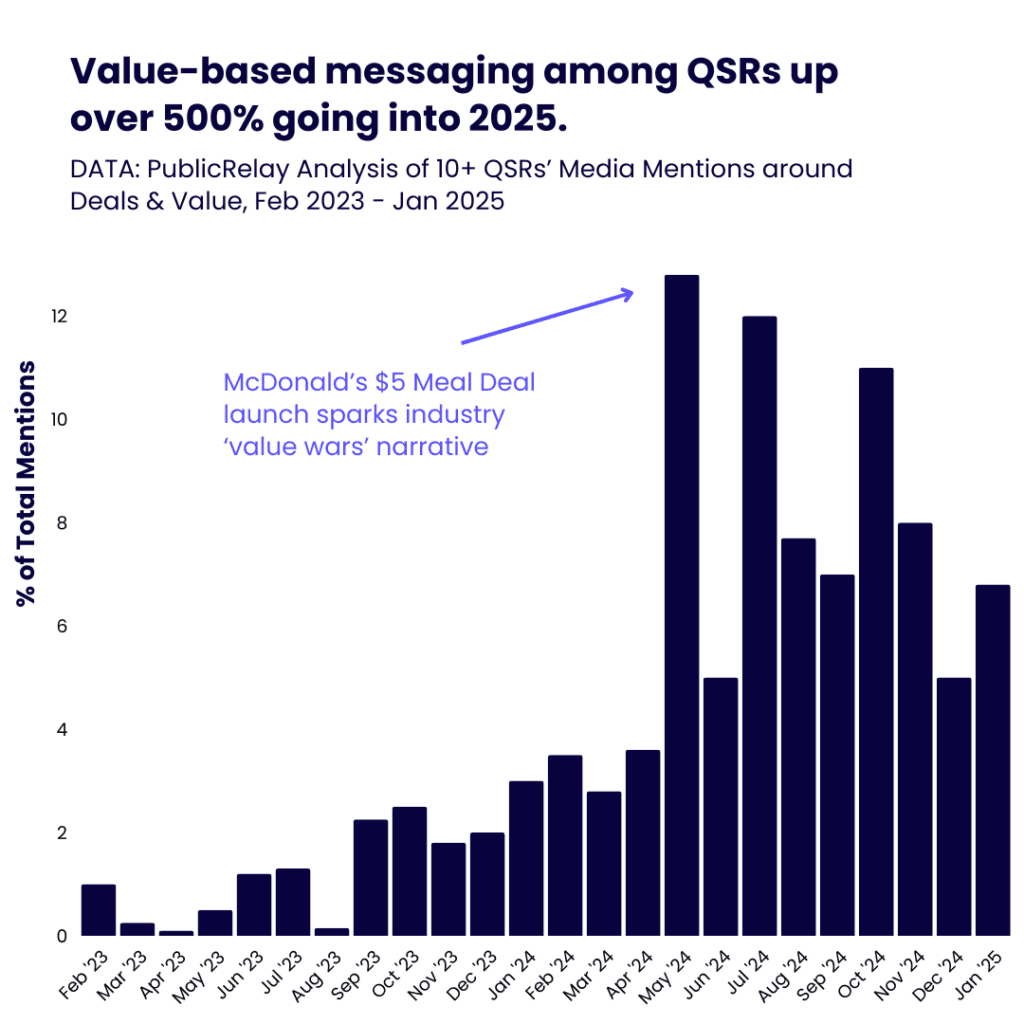Opportunities are emerging as companies commit record capital towards powering data centers. The media has been highly receptive to communications around co-location deals as AI continues to command the news cycle. But, utilities also face reputational risks as reporters call attention to rising rates amid growing consumer anxiety.
This report aims to uncover emerging trends, opportunities, risks across the utility industry media landscape.
To generate data for this analysis, PublicRelay analyzed the earned media of over 30 utilities across the portfolios of 13 holding corporations. The companies chosen as a part of the analysis service residential customers spanning the Continental United States.
By reading this resource, you’ll learn why:
1) Utilities succeed when communicating on innovation, grid resiliency, and community impact.
2) You should pitch alternative energy projects as an investment into energy security and diversification.
3) You should center your AI messaging strategy around American leadership and local support.
4) Showing support for vulnerable populations and small businesses impacted by high bills is a winner for reputation.
5) Direct bill relief efforts set up communications opportunities.
Download the report
Last week, The Conference Board hosted Corporate Communications: Driving the Business Forward, bringing together top industry leaders to discuss the evolving role of communications in today’s business landscape. Below are some of the most compelling insights that emerged from the event.
The Business-First CCO: What CEOs Expect from Communications
The event’s opening session set the tone with a clear message: “CEOs are looking for CCOs who are business partners first, communications experts second.”
Denise Dahlhoff of The Conference Board bolstered this with data, and the theme was echoed by Thrivent’s CCO Greg McCullough and CEO Terry Rasmussen. Today’s most valued communicators:
- Possess strong business acumen
- Align messaging with corporate goals
- Prioritize outcomes over outputs
- Deliver and measure business impact
Throughout the conference, speakers reinforced this shift from traditional PR roles to strategic advisory positions:
- Jessica Kleiman (Lennar): Communications plays a critical role in talent acquisition, particularly for companies facing large-scale hiring needs.
- Golin: Their analysis found that CEOs with high media visibility in transformation and growth narratives boost corporate reputation, providing a key opportunity for CCOs.
- Katie Hill (NFL): The NFL is broadening its media reach, tracking not just sports media but also diverse outlets and influencers to engage new audiences.
In sum, Communications isn’t just about storytelling; it’s about driving measurable business success.

Reputation as a Business Asset
In a standout session, Allyson Park (Walmart) and Beatriz Perez (Coca-Cola) broke down why reputation should be treated as a business asset:
- 25% of a company’s market capitalization is tied to reputation.
- Reputation is shaped not just by messaging but by corporate actions. What you say yes and no to matters.
- When a new CEO arrives, redefining corporate purpose is a key moment for communicators to add value.
One major shift: Internal audiences—employees and customers—are now the priority over media relationships. Companies are focusing on building credibility internally, knowing that reputation starts from within.
AI’s Growing Role in Communications
Of course, AI was a hot topic throughout the event. Speakers shared real-world AI applications, from generating podcasts and short videos in real-time to monitoring outdated messaging, highlighting its potential but also its limitations. Points included:
- Use AI for efficiencies – fact-checking, summarizing news, and automating repetitive tasks.
- Lean on SMEs (subject matter experts) for nuance, judgment, and context.
- AI accelerates workflows, but it can’t replace human intuition, especially in areas like crisis comms and reputation management.
In sum, general agreement was that, while it can do incredible things on its own, AI should enhance human expertise, not replace it.
Navigating Corporate Engagement in Cultural & Political Issues
Panelists addressed the increasingly complex role of corporations in social issues. Key insights included:
- Companies are rethinking their approach to ESG & DEI messaging. They’re not pulling back entirely, but focusing on alignment between mission and business.
- Paul Dyer (/prompt) & Claudine Patel (Opella) shared that being culturally relevant is now a business imperative. They stated that the best approach was to follow societal trends, not marketing fads.
- Anna Frable (Novo Nordisk): Novo Nordisk’s efforts to elevate the conversation around obesity align with its business goals, making advocacy feel natural rather than forced.
Takeaway: Corporate activism isn’t disappearing, but companies are being more intentional about when, where, and how they engage.
The Communications-Marketing Partnership is Stronger Than Ever
Several sessions explored the increasing convergence of Communications and Marketing.
- Rob Jekielek (The Harris Poll): A unified PESO (Paid-Earned-Shared-Owned) approach is more effective than focusing on SEO.
- Data-driven storytelling is becoming the norm, requiring closer collaboration between comms and marketing teams.
What’s this mean for Communications leaders? You should be embracing cross-functional collaboration to maximize impact.

Final Thoughts
The Conference Board’s event highlighted a fundamental shift in the communications function: CCOs are no longer just storytellers. They are business strategists.
Communications teams that can demonstrate business impact, align with corporate goals, and leverage AI effectively will be best positioned for success. If you’re a communications leader looking to drive real business impact, these takeaways are just the beginning.
Let’s continue the conversation.
This post was written by Jim Key, VP of Enterprise Solutions at PublicRelay and attendee of TCB’s Corporate Communications event.
For quick-service restaurants (QSRs), the battle for consumer attention has never been more competitive or more price-driven. The past two years have ushered in a new normal in fast food, where value messaging dominates the media narrative and continues to shape brand strategy as we progress into 2025.
PublicRelay’s analysis of media coverage from 10+ QSRs shows a 500%+ increase in QSR messaging focused on value since early 2023. The trend isn’t just a response to inflation; it’s a fundamental shift in how brands communicate their offerings, defend their market share, and shape consumer expectations.
The Data Behind the Value War
QSRs are locked in an escalating cycle of promotional battles, as seen in recent media trends:
- May 2024 Surge: McDonald’s $5 Meal Deal launch ignited a sustained three-month media spike, forcing competitors like Burger King and Wendy’s to introduce rival promotions.
- Seasonal Fluctuations: Holiday campaigns momentarily pushed deal messaging aside in late 2023, while seasonal events (e.g., Lent specials) caused a brief dip in March 2024.

With each major promotion, competitive ripple effects extend media coverage beyond the initial campaign, proving that in today’s QSR landscape, value is a conversation that brands must continually engage in.
Why Value-Driven QSR Messaging is Non-Negotiable
Beyond media hype, economic pressures are making affordability a top priority for both consumers and brands:
- Inflation & Price Sensitivity: Fast food prices have surged 60% since 2014, far outpacing general inflation. Customers are more price-conscious than ever.
- Margin Squeeze: Labor costs have risen 22% since 2019, making cost-effective promotions essential to maintaining profitability.
- The Grocery Threat: Supermarkets now hold a 310-basis-point price advantage over QSRs, meaning fast food must prove its value beyond just price points.
In this environment, QSR messaging that reinforces value-driven storytelling is essential—not just for sales, but for sustaining brand relevance.
What This Means for Communications Leaders
For PR and communications teams, value messaging is a strategic necessity. Here’s what QSR communicators need to keep in mind:
- Short-Term Wins vs. Long-Term Strategy: Promotions create temporary media spikes, but brands must balance them with broader positioning that reinforces long-term brand equity.
- Echo Effects Drive Media Longevity: Competitive responses extend deal-driven media cycles. Smart brands capitalize on this momentum by keeping value narratives fresh.
- Digital Loyalty Is the New Value Play: App-exclusive deals are becoming a critical tool for reinforcing value perception while strengthening customer retention.
The Future of QSR Messaging
Expect value-driven narratives to peak in summer months and taper off during holiday seasons as brands shift focus to festive campaigns. Ensure value messaging remains compelling and sustainable beyond short-term promotions. For communicators, this is a test of agility. How will brands balance short-term promotional buzz with a long-term value platform that keeps customers engaged?
Connect with us to learn how PublicRelay can help your brand adapt to this value-first landscape.
Author: Medha Chandorkar, VP of Product Management
January 13th | 12:00pm ET | Virtual
Organizations today are navigating economic volatility, social change, and rapid technological disruption, and as a result, trust has become the ultimate currency. Transparent communication, both internally and externally, isn’t optional anymore. It’s a strategic imperative. Yet, striking the right balance between openness and organizational risk can be challenging.
Nicky McHugh, Global Head of Reputation and Crisis and Communications Governance at Schneider Electric, will guest host this conversation, exploring:
Why This Matters Now
- Internally: Employees want timely and honest information, especially during major changes. When communication is inconsistent or incomplete, confidence in leadership and culture can suffer.
- Externally: Customers, partners, and other stakeholders expect visibility into how organizations are responding to uncertainty. Gaps in communication can create confusion, weaken brand perception, and make it harder to influence the narrative.
What We’ll Explore
- How to communicate authentically when you don’t have all the answers.
- The role of internal communications in reinforcing external credibility.
- Ways to maintain trust during uncertainty and change.
We welcome CCOs, VPs, and Directors of Communications to request an invitation to join this roundtable discussion.
Upon qualification, you will receive a follow up email from a member of our team confirming your participation.
January 29th | 6:00pm PT | San Francisco, CA
Communications leaders today are navigating one of the most profound shifts the profession has ever seen. AI is reshaping how work gets done — accelerating routine tasks, expanding analytical insight, and redefining the skills communicators need to lead. At the same time, media consumption continues to fracture, stakeholder expectations are intensifying, and communications teams are increasingly expected to advise on everything from earnings and litigation risk to cultural flashpoints.
The result isn’t a crisis, but a paradigm shift — one that is expanding the scope of responsibility, evolving the apprenticeship model, and rewriting what it means to build and lead a modern communications function.
Hosted by Joe Carberry, Partner at Breakwater Strategy and David Chamberlin, Managing Director of Strategic Communications at Orrick, this conversation invites communications leaders to explore how this transformation is unfolding through questions like:
- How do we cultivate the next generation of communicators when their early career experience looks so different from our own?
- What does it mean to be “business fluent” in a world where communicators sit at the intersection of technology, strategy, policy, and culture?
- How should leaders rethink the integration of communications, data, and AI to better guide organizational decision-making?
- As AI tools become more efficient, what does it take for communicators to become smarter, more connected, and more influential in the rooms where decisions are made?
Over dinner, we’ll examine not only the challenges but also the opportunities and leave with a shared understanding of how communicators can successfully lead through this transformative era.
We welcome CCOs, VPs, and Directors of Communications to request an invitation to join this roundtable discussion.
Upon qualification, you will receive a follow up email from a member of our team confirming your participation.
A company’s reputation is influenced by a diverse set of stakeholders, including employees, investors, customers, regulators, business partners, and policymakers. How does media coverage impact each of these groups? Join us for an exclusive 20-min webinar where we’ll unveil key findings from PublicRelay’s latest research on stakeholder sentiment.
Using data-driven insights from our Benchmark, we’ll explore:
- How different stakeholder groups perceive companies in the media and how their sentiment varies.
- Which stakeholders are most sensitive to media narratives and why their reactions are the most volatile.
- Why customers often remain undecided and what this means for corporate messaging.
- How sentiment shifts over time and what it reveals about reputation management strategies.
This report walkthrough will provide PR and communications leaders with actionable insights to navigate stakeholder sentiment effectively. Take this opportunity to sharpen your media strategy and better understand the audiences shaping your corporate reputation.
Host: Haley Wilson, Strategic Partnerships Lead at PublicRelay
Watch On-Demand Here
Watch On-Demand
This 25-minute webinar discussed the complex intersection of geopolitics and corporate reputation.
Using data-driven insights from PublicRelay’s benchmark, we explored when and how companies should engage in geopolitical discourse, balancing risk, reputation, and stakeholder expectations.
Watch on-demand to:
- Learn data-backed strategies for managing corporate reputation in a volatile geopolitical landscape.
- Hear insights on balancing stakeholder pressures while minimizing reputational risk.
- Gain a framework to assess whether your company should engage on a given issue.
What is Share of Voice?
Share of Voice (SOV) measures how much attention your brand receives compared to your competitors across various platforms, including social media, traditional news outlets, and other media channels. It’s a metric that PR professionals and communicators often rely on to gauge brand visibility and assess how well they are performing in the marketplace. By counting your brand’s total mentions relative to your industry, you can see what percentage of the total mentions are about your company.
At face value, SOV is a straightforward concept. It provides a snapshot of your brand’s ability to capture public and media attention, making it a valuable starting point for understanding your market presence. Communicators value this because they can see a volume related metric on how they are doing versus competitors. However, relying solely on Share of Voice can be misleading, because at its core it is simply a counting exercise.
The Limits of Share of Voice
While SOV is a useful metric, treating it as a definitive measure of success is a common pitfall. Here are some key reasons why Share of Voice, may not tell the whole story:
- Sentiment Matters: Imagine your brand commands 50% of the SOV pie. On the surface, this sounds like a win. But what if the majority of your mentions are negative? For example, if your brand is being criticized in news articles or on social media, having a high Share of Voice might highlight a reputational issue rather than a success story. Without analyzing the sentiment behind your media mentions, SOV becomes a blunt instrument, incapable of providing actionable insights.
- Context is Critical: Not all media mentions are created equal. Coverage in a respected industry journal might carry more weight than a flood of social media chatter. SOV, in isolation, doesn’t account for the context or quality of these mentions.
Turning SOV into a Strategic Tool
To extract real value from Share of Voice metrics, it’s crucial to pair them with deeper analysis. Here are some best practices for using SOV effectively:
- Prioritize Engagement Metrics: Evaluate how your mentions translate into engagement, such as social media interactions, website visits, or conversions. Pairing SOV with these metrics paints a more complete picture of your success.
- Focus on Key Message and Reputational Driver SOV: Track whether your brand’s core messages are resonating in your coverage. Are your mentions aligned with the narratives you want to promote or the reputational categories that are most important to your brand? If not, a high SOV may indicate that your message or reputational impact is being lost or misconstrued.
- Incorporate Sentiment Analysis: Measure the tone of your mentions to determine whether your Share of Voice skews positive, neutral, or negative. Sentiment analysis provides a richer understanding of how your brand is perceived and can help you address reputational challenges proactively.
Conclusion
Share of Voice is an important tool in the PR and communications arsenal, but using it simply as an article counting comparison to competitors doesn’t do anyone much good. Without deeper analysis of areas such as sentiment and context, SOV can lead you astray, masking underlying issues or providing an incomplete view of your brand’s market position. By combining SOV with more nuanced metrics and insights, communicators can turn a blunt instrument into a precision tool, driving meaningful outcomes for their brands.
Understanding Share of Voice’s limitations doesn’t diminish its value but underscores the importance of using it strategically. With the right approach, SOV becomes more than a number. It becomes a pathway to smarter, more impactful communications strategies.
Author: Darren Sleeger, SVP of Enterprise Analytics